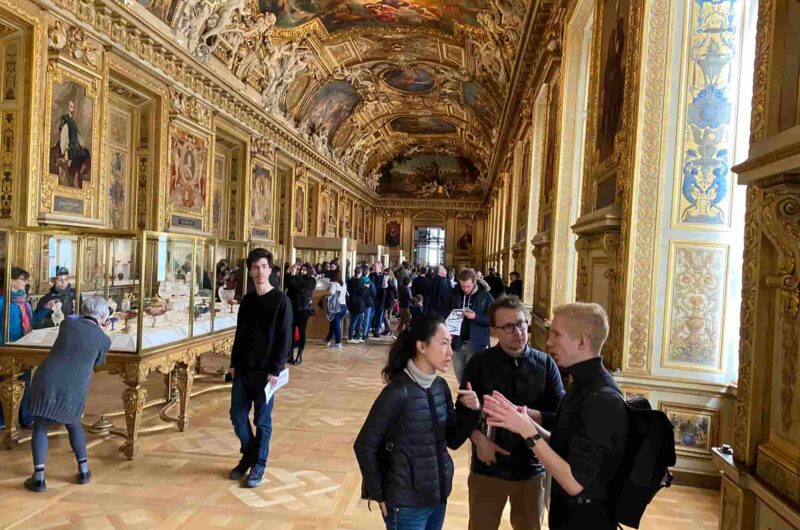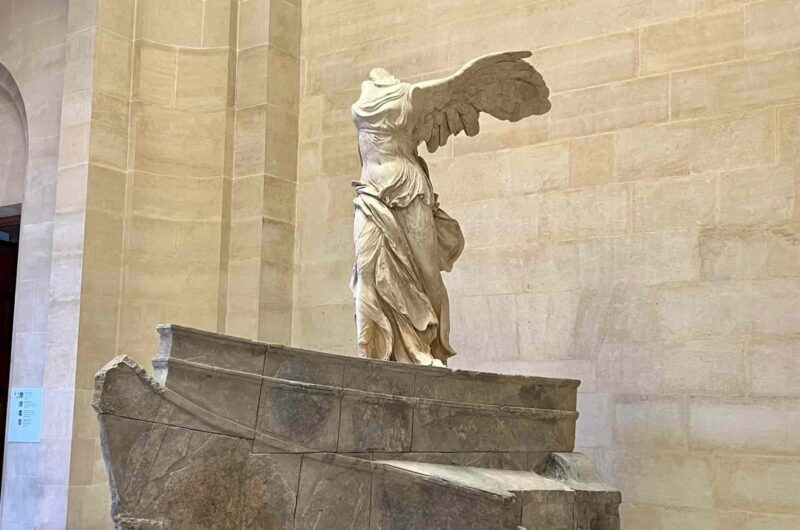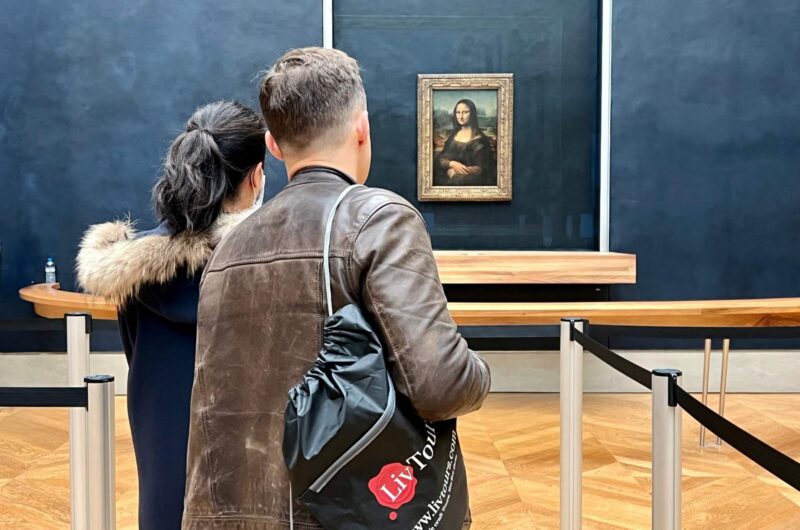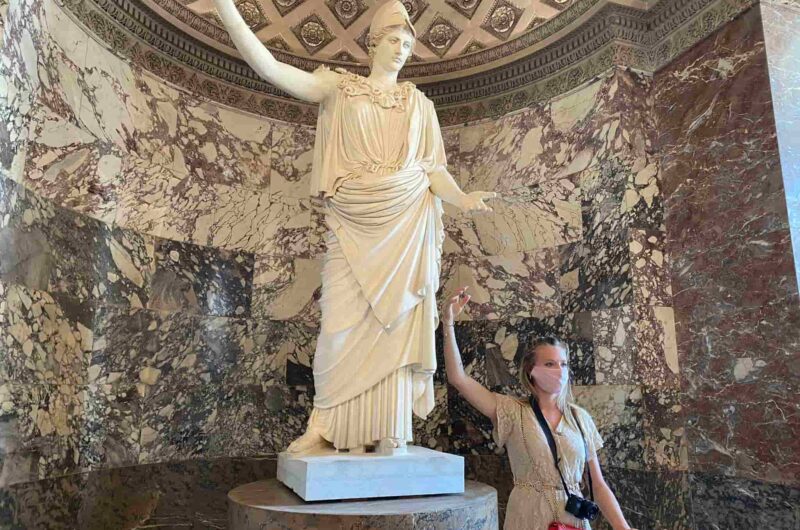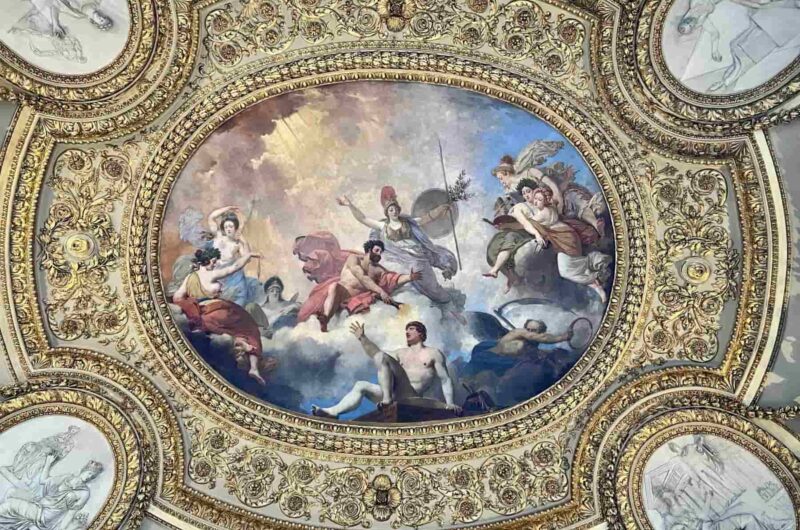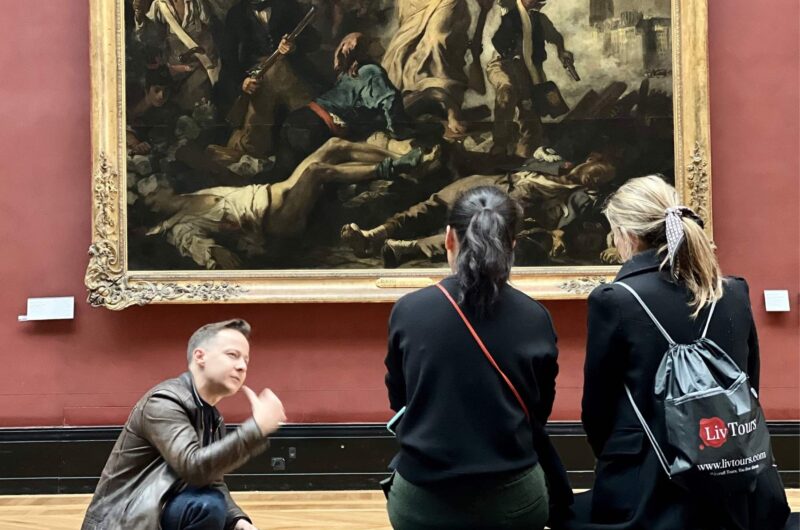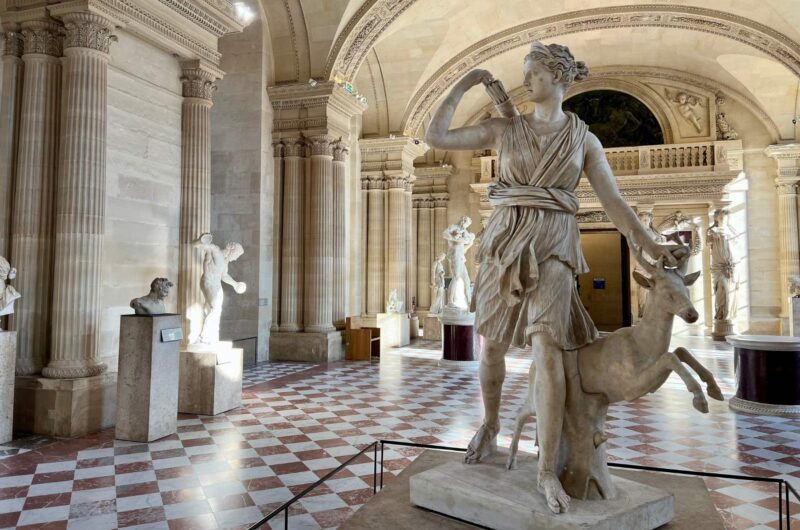During your Louvre tour, you’ll explore the most iconic paintings and sculptures located in two out of three of the museum’s expansive wings. Your guide will highlight influential works spanning various periods, including Ancient Greece, Ancient Egypt, the Renaissance, Neoclassicism, and Romanticism. Additionally, you’ll learn about the evolution of this 12th-century fortress and palace that transformed into France’s greatest museum.
In the Ancient Egypt collections, take a close look at the sleek granite Great Sphinx of Tanis. Discovered in an Egyptian temple in the 1800s, this piece is considered to be the biggest and best-preserved in any Western museum.
Next, delve into two globally recognized sculptures from Ancient Greece’s: the armless Venus de Milo and the headless Winged Victory of Samothrace. Despite missing some parts, these goddesses are universally considered some of the best surviving original Hellenistic sculptures.
Just a short walk from Venus de Milo you will get a chance to see some impressive Italian sculptures including Michelangelo’s powerful Rebellious Slave & Dying Slave as well as Canova’s passionate Cupid & Psyche.
Before experiencing Da Vinci’s Mona Lisa, you’ll explore a few other eye-catching pieces the Louvre offers. This includes stops at Paolo Veronese’s Wedding Feast of Cana, Jacques-Louis David’s Coronation of Napoleon, and icons of French Romanticism like Delacroix’s Liberty Leading the People and Théodore Géricault’s Raft of Medusa.
Mona Lisa
Of all the thousands of paintings housed in the Louvre, Da Vinci’s Mona Lisa remains the most popular and perplexing piece. Supposedly the portrait of a 16th-century Italian noblewoman, this painting has bewitched billions over the years and inspired countless songs, films, and novels. Your guide will shed light on how this painting became one of the most well-known art works in the world.


